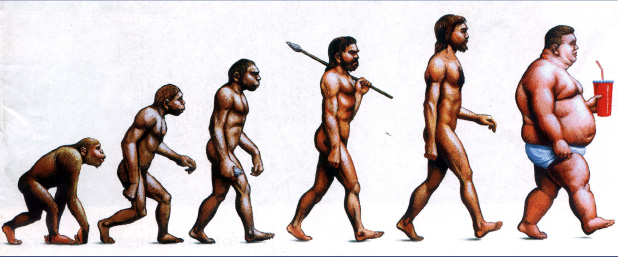How to Go Paleo
Posted by Cheryl on Sunday, March 21, 2010 · 3 Comments
Especially of late I’ve been getting a lot of questions on “how to go paleo”. I will often respond with the standard CrossFit nutrition statement : eat meat, vegetables, nuts and seeds, some fruit, little starches and no sugar. This statement is usually followed by a lengthy, possibly overwhelming, detailed-oriented conversation on paleo nutrition specifics:
- no grains
- no breads (whole grain products, pastries, tortillas, English muffins, etc.)
- no pasta
- no rice
- no corn products
- no dairy (butter, yogurt, cheese, etc)
- no legumes (beans, including soy beans)
- no peanuts (legume)
- no white potatoes
- no sugar (table sugar, fruit drinks, sports drinks, syrup, agave, etc)
- no high-fructose corn syrup
- no artificial sweeteners, etc.
- no refined vegetable oils
- no grain-fed animal products (beef, fish, etc)
- no preservatives
- no processed foods
There is a moment of silence as they realize I’ve just described what most folks eat on a regular basis. Slowly a look of shock and disbelief spreads across their faces as they realize they should not be eating whole wheat toast at breakfast, chicken pasta with veggies for lunch, and even the sacred brown rice for dinner. Before they can justify their dietary habits with the usual response of “everything in moderation”, I begin to explain the science behind foods not permitted on The Paleo Diet: hyperinsulinism, insulin resistance, type II diabetes, skewed omega 3 to omega 6 ratios, lipid profiles, ph acid – base balance, phytates, lectins, gluten, leaky gut, metabolic syndrome, silent inflammation, CVD, auto-immune issues, diseases of modern civilization, etc.
I summarize by explaining that The Paleo diet is the oldest diet around. For millions of years we were hunter- gatherers eating what nature provided. Our bodies evolved to process these natural foods, unlike the foods that were first introduced 15,000 to 20,000 years ago during the agricultural revolution. So, how do you go paleo? What can you eat? Paleo friendly foods include:
- grass-fed meats
- wild caught fish and seafood
- organic fowl
- eggs high in omega 3’s
- a variety of veggies
- a variety of fruits
- a variety of nuts and seeds
- a variety of good fats (olive, coconut, almond, walnut, etc)
- avocados
- coconut milk
- and coffee is allowed (yep, I drink mine black)
At each meal (and snack) I’m combining a protein, some veggies (sometimes a little fruit) and a healthy fat. It’s that easy. Yet, it’s important to understand that there is a “method to the madness” – there is science and research (and my own personal experiences) that link this diet to a healthier body. To help you jump start your journey into paleo nutrition, I’ve added a new “Paleo Tools” resource tab. Click on the ‘Paleo Tools” tab at the top of this page to find:
Videos on Paleo Nutrition
Paleo Shopping List and Guides
The BEST Paleo Cookbook
Leading Paleo Nutrition Experts
Paleo Reading Recommendations
Free Paleo Recipes
Additional Paleo Resources and Blogs I Follow
One last thing. Don’t believe everything I write or say. I’m not a dietitian providing nutrition counseling or nutrition management programs. Doubt me. I’m a skeptic by heart myself. I never accept what others say, especially those practicing and preaching conventional wisdom with little results. I’m interested in not only how fit you appear to be on the outside, but also how fit you are on the inside with excellent bio-markers of health. I search for the latest, cutting-edge information and research. I spend a great deal of time reading and reviewing abstracts, books, and other websites. I suggest you begin this journey by doing the same. Do your own research, find your own answers, become your own expert. In addition to the resources listed in the “Paleo Tools” tab, I also use the following unbiased internet resources on a daily basis:
- PubMed is a free database accessing online medical literature (citations, abstracts and some full text articles)
- Google scholar allows you to search scholarly literature across many disciplines and sources, including theses, books, abstracts and articles
- Google Books is a collection of digitized books which allows you to view limited previews portions of most books as well as do “text searches” within the book to locate specific information.
Consult with a physician before beginning in new exercise or fitness program
Category: Uncategorized · Tags: auto-immune issues, biomarkers of health, crossfit, CVD, dairy, diseases of modern civilization, fish oil, gluten, grains, grass-fed meats, HbA1c, hyperinsulinism, insulin resistance, ldl, leaky gut, lectins, legumes, lipid profiles, Loren Cordain, metabolic syndrome, nutrition, nuts, omega 3, paleo cookbook, paleo diet, Paleo Nutrtion experts, paleo recommended reading list, paleo resources, paleo shopping list, paleolithic man, peanuts, ph acid - base balance, phytates, rice, robb wolf, silent inflammation, triglycerides, type II diabetes, videos
 EvolvingHealthConcepts
EvolvingHealthConcepts

Pingback: Paleo Diet Going Mainstream? | EvolvingHealthConcepts
Pingback: Paleo Quick Start? | EvolvingHealthConcepts
Pingback: Paleo Talk Resources | EvolvingHealthConcepts